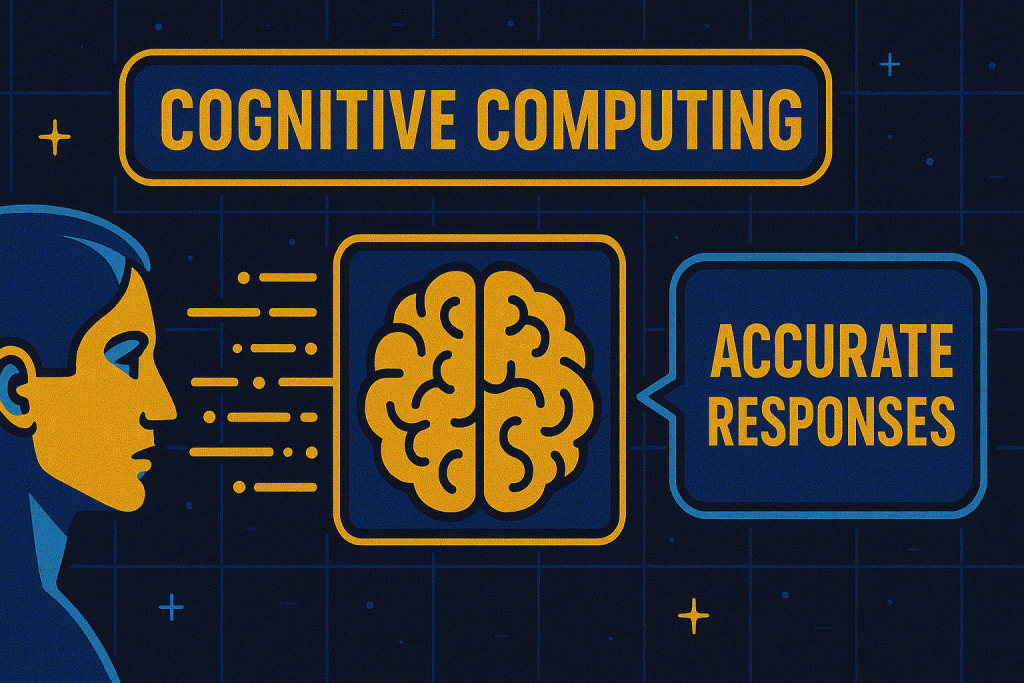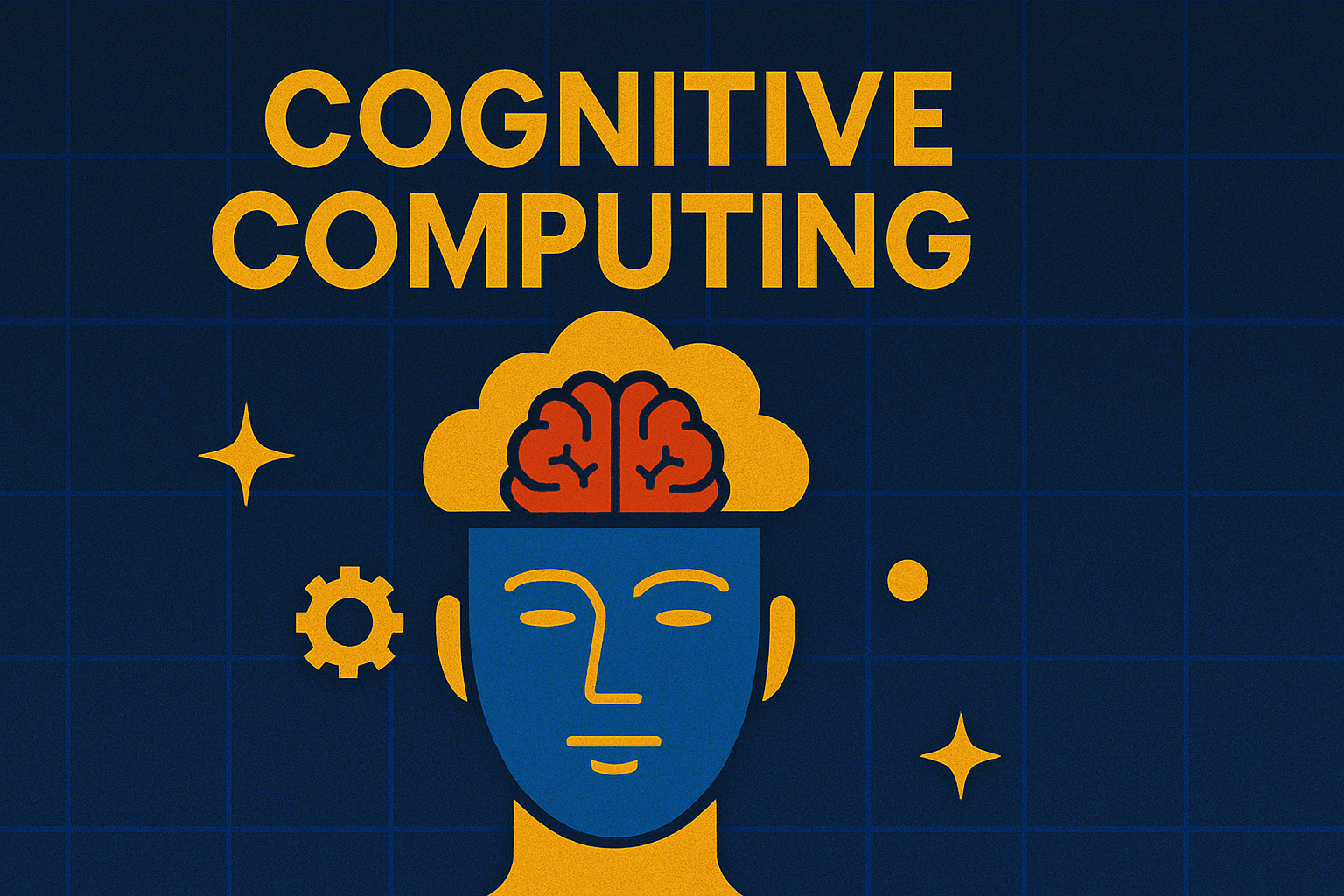Cognitive Computing brings human-like reasoning into modern digital decision-making. It belongs in the broader category of advanced computing and analytics, where systems learn from data and support complex judgments. Today, organizations face fast-changing markets and huge information flows. They need tools that can interpret context, deal with uncertainty, and recommend actions. It helps fill that gap by combining data, models, and interaction with people. In this article, you will learn what Cognitive Computing means and how it differs from traditional systems. You will also see its main components, history, and core types. Then you will follow a simple explanation of how Cognitive Computing solutions work in practice. After that, you will explore the key benefits and challenges. Finally, you will discover real-world applications in sectors such as healthcare, finance, customer service, and more, where this ai technology already delivers value.
What is Cognitive Computing?
Cognitive Computing is a field of computer science that designs systems to mimic human cognitive functions such as reasoning, learning, and problem-solving. These systems aim to interpret complex, often unstructured data and suggest answers or options, instead of giving only fixed outputs. The goal is to help people make better decisions when the situation is unclear, fast moving, or information-heavy. Cognitive Computing often appears as a helper that works with people rather than replacing them.
In practice, Cognitive Computing combines artificial intelligence techniques with areas like natural language processing, machine learning, and knowledge representation. It processes large streams of data, picks out patterns, and weighs different possibilities. The system might present ranked suggestions or highlight important evidence. Unlike many traditional programs, a cognitive solution can adapt over time as it receives feedback and new information. It therefore fits within the wider AI and data analytics landscape as a partner for humans dealing with complex decisions.
Background of Cognitive Computing
Cognitive Computing rests on several key ideas. First, systems should handle uncertainty and incomplete information. Second, they should understand context, not just exact keywords or simple inputs. Third, they should learn from interactions and improve responses over time. Under the surface, these ideas depend on solid data pipelines, models, and infrastructure.
Cognitive platforms draw information from many sources, including structured databases, documents, media, and live data streams. They use statistical models and knowledge graphs to connect facts and concepts. Interfaces often accept natural language queries, and sometimes speech or images, and respond in a way that users can understand. Strong security and governance features help protect data and control access. All of this runs on scalable computer systems that can handle intensive workloads.
List of Key Components or Aspects:
- Data ingestion and integration to gather structured and unstructured data from multiple sources.
- Natural language processing to understand human language in queries, documents, and conversations.
- Machine learning and reasoning engines to detect patterns, infer relationships, and rank possible answers.
- Knowledge bases and ontologies to capture domain concepts, rules, and links between entities.
- User interaction layer that supports conversational interfaces, dashboards, or specialized apps.
- Feedback and learning loop so the system refines its models and improves accuracy over time.
History of Cognitive Computing
The roots of this lie in early AI research and expert systems from the 1960s and 1970s. Those systems tried to represent human knowledge through explicit rules. However, they struggled with ambiguity and changing environments. As data volumes and computing power grew, researchers looked for approaches that could handle more complex, real-world problems.
The term “Cognitive Computing” gained visibility in the 2000s and 2010s, especially with high-profile systems that performed well in tasks such as question answering and game shows. Vendors began to frame new platforms as cognitive solutions that combine learning, natural language, and reasoning. Over time, cloud providers added cognitive services that developers could use without building everything from scratch. Today, It continues to evolve alongside generative models and other advanced AI methods.
| Year / Period | Milestone | Description |
|---|---|---|
| 1960s–1980s | Early AI and expert systems | Rule-based programs attempt to capture human expertise. |
| 1990s | Growth of data and statistical learning | Machine learning gains traction for pattern recognition tasks. |
| 2000s | Cognitive Computing concept formalizes | Vendors and researchers promote human-like reasoning systems. |
| 2011 | Notable cognitive system wins quiz show | Public sees the potential of large-scale question-answering machines. |
| 2010s–Today | Cloud cognitive services emerge | Major platforms offer APIs for language, vision, and decision support. |
Types of Cognitive Computing

Cognitive Computing solutions appear in several broad types, often combined in one platform. One type focuses on conversational agents that understand natural language and respond with helpful answers. These systems power chatbots and virtual assistants that can handle customer questions or internal support.
Another type centers on decision-support engines. These systems analyze large datasets, highlight patterns, and present recommendations to professionals in areas such as medicine or finance. A third type targets perception tasks by interpreting images, audio, or video. These systems help with tasks such as document understanding or medical imaging review.
Some platforms specialize in domain-specific cognition, for example legal research or technical troubleshooting. Others provide general-purpose cognitive services through cloud APIs, so developers can embed language, vision, and reasoning features in many applications. Often, organizations combine these types to build complete, intelligent solutions that operate across channels and devices.
How Does Cognitive Computing Work?
Cognitive Computing follows a sequence of practical steps. First, designers define the business problem, such as assisting doctors with diagnoses or helping agents answer customer questions. They decide which decisions or tasks the system should support. Next, they identify and connect data sources, including records, documents, and real-time feeds.

Then teams prepare and label data where needed, and select models for language, perception, or prediction. The system ingests input from users, such as text or speech, and transforms it into internal representations. Models analyze this information, consult knowledge bases, and generate possible answers or actions. A ranking component orders these by relevance or confidence. Finally, the solution presents a response through an interface, accepts feedback from users, and uses that feedback to refine models and improve performance over time.
Pros and Cons of Cognitive Computing
Cognitive Computing offers strong benefits but also introduces risks and challenges. Organizations should consider both before adopting these systems at scale.
| Pros | Cons |
|---|---|
| Enhances decision quality with rich insights | May reflect biases in training data and design |
| Handles unstructured and complex information | Requires large, high-quality datasets and expertise |
| Learns and improves over time | Can be difficult to explain and audit in detail |
| Supports natural language and flexible input | Raises privacy, security, and compliance concerns |
| Automates repetitive cognitive tasks | Implementation and maintenance can be costly and complex |
Applications or Uses of Cognitive Computing
Cognitive Computing now appears across many industries. It helps organizations interpret data, support staff, and personalize experiences.
Healthcare and life sciences
Clinicians use cognitive tools to review medical records, research, and images. Systems surface relevant evidence, suggest possible diagnoses, and highlight risks.
Finance and risk management
Banks and insurers apply cognitive solutions to analyze transactions, news, and customer data. The systems assist with fraud detection, credit assessment, and advisory services.
Customer service and retail
Contact centers use conversational agents to manage common queries and guide agents with recommended responses. Retailers combine behavior data with cognitive insights to tailor offers and product suggestions.
Manufacturing and robotics
Industrial setups pair Cognitive Computing with sensors and robots on the factory floor. The system interprets machine data, predicts failures, and recommends maintenance actions.
Government and knowledge work
Public agencies use cognitive tools to search large document collections, summarize findings, and support case workers. Knowledge-focused organizations rely on these systems to surface insights that are hard to find manually.
Resources
- Builtin. Cognitive Computing
- AWS. What Is Cognitive Computing?
- Google Cloud. What Is Cognitive Computing
- GeeksforGeeks. Cognitive Computing
- IBM. Cognitive Computing

